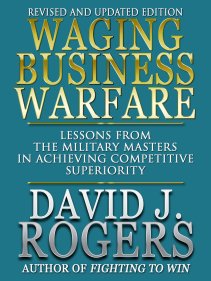 Writing is a time-consuming process of self-discovery, self-awareness, and self-expression that may satisfy a writer’s deepest needs. Some writers find that nothing can compete with, nothing can replace, the writer’s joy of creating. Many writers so saturate themselves with their work that it becomes a need as strong as sleep, sometimes stronger. Many writers think, “This writing that I am doing is essential to my fulfillment and well-being. At times I may be so involved I will forget to eat. I will forget to make love. I will block out distractions. I will arrange a life-style and personal habits and routines to accommodate my writing.”
Writing is a time-consuming process of self-discovery, self-awareness, and self-expression that may satisfy a writer’s deepest needs. Some writers find that nothing can compete with, nothing can replace, the writer’s joy of creating. Many writers so saturate themselves with their work that it becomes a need as strong as sleep, sometimes stronger. Many writers think, “This writing that I am doing is essential to my fulfillment and well-being. At times I may be so involved I will forget to eat. I will forget to make love. I will block out distractions. I will arrange a life-style and personal habits and routines to accommodate my writing.”
But writers have other roles too. And this fact creates conflicts. Psychiatrist Carl Gustav Jung thought that the artist’s life cannot be otherwise than full of conflicts because two forces are at war in them—on the one hand the normal human longing for happiness, satisfaction, and security, and on the other hand “a ruthless passion for creation which may go so far as to override every personal desire.” That passion for creation absorbs almost all the artist’s energy: “A special ability means a heavy expenditure of energy in a particular direction with a consequent drain from some other side of life.” The artist’s work “means more to him than his personal fate, whether he is aware of it or not. Being essentially the instrument for his work, he is subordinate to it.” (Carl Gustav Jung, “Psychology and Literature’ in Brewster Ghiselin, ed. The Creative Process).
In Silences, Tillie Olsen points out that delaying a focus on writing for a long time during a period in your life may become a habit: “The habits of a lifetime when everything else had to come before writing are not easily broken, even when circumstances now often make it possible for writing to be first; habits of years—response to others, distractibility, responsibility of daily matters—stay with you, mark you, become you” (Tillie Olsen, Silences, p. 38). If you desire to be a serious writer, these habits of letting other things come first create conflicts.
 Some writers do consider writing the most important role in their life and give other roles short shrift. Many writers would agree with Katherine Anne Porter who said that the “thing” between her and writing was the strongest bond she had ever had—stronger than any bond she had ever had with any person or activity. A survey showed that writers and poets are considered highly desirable occupations for a mate. But many are so consumed by writing, and work such long hours in such solitude, that they may make poor spouses. Nobel Prize winner Saul Bellow—married five times–said, “I have always put the requirements of what I was writing first—before jobs, before children, before any material or practical interest, and if I discover that anything interferes with what I’m doing, I chuck it. Perhaps this is foolish, but it has been the case with me.” (Saul Bellow in Conversations with Saul Bellow, p. 20)
Some writers do consider writing the most important role in their life and give other roles short shrift. Many writers would agree with Katherine Anne Porter who said that the “thing” between her and writing was the strongest bond she had ever had—stronger than any bond she had ever had with any person or activity. A survey showed that writers and poets are considered highly desirable occupations for a mate. But many are so consumed by writing, and work such long hours in such solitude, that they may make poor spouses. Nobel Prize winner Saul Bellow—married five times–said, “I have always put the requirements of what I was writing first—before jobs, before children, before any material or practical interest, and if I discover that anything interferes with what I’m doing, I chuck it. Perhaps this is foolish, but it has been the case with me.” (Saul Bellow in Conversations with Saul Bellow, p. 20)
Others consider writing enjoyable, but not nearly their most important role. Being an actively involved parent–a time-consuming function–can take precedence. Some writers think during the day about when they’ll have all the time to write whenever they want, but because they have other roles to fulfill, they consider themselves lucky if they can write at all. Married women writers especially testify to the difficulty of finding the time and support needed to have a successful writing career while also possibly holding another job and managing a family.
 Here it seems appropriate to talk about my Law of Give Up to Get. The Law of Give Up to Get means simply that to get something important in life, you must give up something else. Gripe all you want, rail at the gods, and wish it weren’t so, but you have no choice. In the long run, perhaps you can have everything you desire. But at any one time, to get A you’ll have to give up B. To get X you must give up Y, and maybe you might have to give up Z too. To write, you have no choice but to give up something else—maybe more than one thing. That’s a law, the way life works: to achieve this, you’ll have to give up that—time, energy and other resources spent doing other things, attaining other satisfactions.
Here it seems appropriate to talk about my Law of Give Up to Get. The Law of Give Up to Get means simply that to get something important in life, you must give up something else. Gripe all you want, rail at the gods, and wish it weren’t so, but you have no choice. In the long run, perhaps you can have everything you desire. But at any one time, to get A you’ll have to give up B. To get X you must give up Y, and maybe you might have to give up Z too. To write, you have no choice but to give up something else—maybe more than one thing. That’s a law, the way life works: to achieve this, you’ll have to give up that—time, energy and other resources spent doing other things, attaining other satisfactions.
Your Roles in Addition to Writing
Now I want you to identify four other roles you have in addition to your role as a writer. Also think about how important each role is to you and your major responsibilities in that role. Rank them in a hierarchy from the most important to the least important. (Include the role of a writer which may be number 1, number 5, or somewhere in between).
Where does your writing role fit on your hierarchy?
Now, answer the question: “What will I do to fulfill my role as a writer to the degree I want while also fulfilling the demands of other roles that I value highly?”
 Are there any roles in your life that can be supported with a smaller investment of time, energy, and other resources so that you can devote more time to writing? Are there any roles currently in your life you might dispense with?
Are there any roles in your life that can be supported with a smaller investment of time, energy, and other resources so that you can devote more time to writing? Are there any roles currently in your life you might dispense with?
You may have found that the life of a serious, hard-working writer is a difficult life. Yet in the midst of difficulties, writers from the Greeks and Romans to the present would agree with Henry Miller that writing is worth pursuing because, despite difficulties and disappointments, setbacks and trials, and the competition among your roles, writing is “a delectable thing.”
© 2023 David J. Rogers
For my interview from the international teleconference with Ben Dean about Fighting to Win, click the following link:
Order Fighting to Win: Samurai Techniques for Your Work and Life eBook by David J. Rogers
or
Order Waging Business Warfare: Lessons From the Military Masters in Achieving Competitive Superiority
or


 or accurate. They are not interesting. Because of an inadequate handling of places, a work that may be superb in every other respect is without convincingly-described locations, scenes, and settings. Descriptions of places are not window dressing that a writer need pay little attention to, but a feature of writing fiction, nonfiction, and drama that is indispensable. Poorly written descriptions of places detract from the quality of the written piece.
or accurate. They are not interesting. Because of an inadequate handling of places, a work that may be superb in every other respect is without convincingly-described locations, scenes, and settings. Descriptions of places are not window dressing that a writer need pay little attention to, but a feature of writing fiction, nonfiction, and drama that is indispensable. Poorly written descriptions of places detract from the quality of the written piece. Award-winning short story specialist Eudora Welty did more than anyone else to point out how central to effective fiction place is. She said that the story’s place affects “all currents” of the work, all of its emotions, beliefs, and moral convictions that “charge out from the story” as the author unfolds it. She said the places should always be identified, and adds that they should be described in a particular way that requires significant writing skills.
Award-winning short story specialist Eudora Welty did more than anyone else to point out how central to effective fiction place is. She said that the story’s place affects “all currents” of the work, all of its emotions, beliefs, and moral convictions that “charge out from the story” as the author unfolds it. She said the places should always be identified, and adds that they should be described in a particular way that requires significant writing skills. Place has been particularly important to some noted authors. You cannot imagine the story’s characters without the place where the author has put them: Dublin to James Joyce, small town and rural Mississippi to Eudora Welty and William Faulkner, Paris, Spain, and Africa to Ernest Hemingway, Camden, Ohio to Sherwood Anderson, southern United States to Truman Capote, James Agee, Reynolds Price, Pat Conroy, and many other “Southern writers,“ the plains of Nebraska to Willa Cather, Chicago to Saul Bellow, the Mississippi River to Mark Twain, the English moors to Charlotte Bronte and sister Emily, eighteenth century London to Charles Dickens, Mexico and the state of Texas to Katherine Anne Porter, Los Angeles to mystery writer Raymond Chandler, and so on.
Place has been particularly important to some noted authors. You cannot imagine the story’s characters without the place where the author has put them: Dublin to James Joyce, small town and rural Mississippi to Eudora Welty and William Faulkner, Paris, Spain, and Africa to Ernest Hemingway, Camden, Ohio to Sherwood Anderson, southern United States to Truman Capote, James Agee, Reynolds Price, Pat Conroy, and many other “Southern writers,“ the plains of Nebraska to Willa Cather, Chicago to Saul Bellow, the Mississippi River to Mark Twain, the English moors to Charlotte Bronte and sister Emily, eighteenth century London to Charles Dickens, Mexico and the state of Texas to Katherine Anne Porter, Los Angeles to mystery writer Raymond Chandler, and so on. (My father was an air raid warden during World War II, and once he took me with him during an air raid practice when the lights of the city were turned off and the skies were filled with search lights) “My father and I turned and came up behind the church where a delivery truck was parked. We walked down the alley, keeping our eyes trained on the apartment buildings’ windows, past the empty lot overgrown with weeds and covered with tin cans and newspapers, and past the bent-in-half, arthritic and reclusive witch’s bleak house. Her ferociously unfriendly German shepherds were oddly quiet. We passed the drowsy homes and apartment buildings of neighbors, only some of whose names we knew. Behind the walls of those buildings were people not unlike us, simple people, all with the stories of their lives never to be written. All shades were drawn, and so the night was perfect, with no more reminders necessary.
(My father was an air raid warden during World War II, and once he took me with him during an air raid practice when the lights of the city were turned off and the skies were filled with search lights) “My father and I turned and came up behind the church where a delivery truck was parked. We walked down the alley, keeping our eyes trained on the apartment buildings’ windows, past the empty lot overgrown with weeds and covered with tin cans and newspapers, and past the bent-in-half, arthritic and reclusive witch’s bleak house. Her ferociously unfriendly German shepherds were oddly quiet. We passed the drowsy homes and apartment buildings of neighbors, only some of whose names we knew. Behind the walls of those buildings were people not unlike us, simple people, all with the stories of their lives never to be written. All shades were drawn, and so the night was perfect, with no more reminders necessary. and a full moon dangled in the sky. On the back porches in neat array, like miniature glass sentinels, stood the empty bottles left out for the milk man. Branches of trees laden with rain bent low over back fences like old women on canes. When the wind blew, the leaves showered the two of us with water, and we laughed. On the ground lay deep puddles that we had no choice but to step through, which was fine with me because I was wearing boots. My father’s shoes made squishing sounds and he said,” Another pair down the drain” and we laughed at that, and I splashed through, heavy-footed.”
and a full moon dangled in the sky. On the back porches in neat array, like miniature glass sentinels, stood the empty bottles left out for the milk man. Branches of trees laden with rain bent low over back fences like old women on canes. When the wind blew, the leaves showered the two of us with water, and we laughed. On the ground lay deep puddles that we had no choice but to step through, which was fine with me because I was wearing boots. My father’s shoes made squishing sounds and he said,” Another pair down the drain” and we laughed at that, and I splashed through, heavy-footed.” swings. The night had taken on an indefinable splendor and given me a feeling of exquisite peace that I hadn’t felt since childhood. I saw a white yacht that was illuminated by deck lights out on the lake. Small waves rocked a rowboat that was not very far from me. With a whoosh, waves tumbled over themselves onto a beach. A bell chimed somewhere on the water. There was a splash and then another. The vivacious woman I was with took off her shirt and bra and swung them over her head like a lasso. She said, “Guess what I do for a living.” I said, “I’ll bet you four million dollars that you are an actress.”
swings. The night had taken on an indefinable splendor and given me a feeling of exquisite peace that I hadn’t felt since childhood. I saw a white yacht that was illuminated by deck lights out on the lake. Small waves rocked a rowboat that was not very far from me. With a whoosh, waves tumbled over themselves onto a beach. A bell chimed somewhere on the water. There was a splash and then another. The vivacious woman I was with took off her shirt and bra and swung them over her head like a lasso. She said, “Guess what I do for a living.” I said, “I’ll bet you four million dollars that you are an actress.” Old cars with dented fenders and gaudy garters dangling on their rear-view mirrors and pick-up trucks with rifle racks cradling ominous shotguns and carbines were parked four deep in the lot. When the door of the Inn swung open, muscular men, their shirt sleeves rolled up above the bicep, sauntered out arrogantly, their arms tight around the waists of conspicuously made-up women, their heads thrown back in exaltation and abandon, and the chime of laughter spilled into the night like flowing wine.”
Old cars with dented fenders and gaudy garters dangling on their rear-view mirrors and pick-up trucks with rifle racks cradling ominous shotguns and carbines were parked four deep in the lot. When the door of the Inn swung open, muscular men, their shirt sleeves rolled up above the bicep, sauntered out arrogantly, their arms tight around the waists of conspicuously made-up women, their heads thrown back in exaltation and abandon, and the chime of laughter spilled into the night like flowing wine.” Excellent writers should be able to describe places that they have experienced or have heard or read about and can clearly envision as they compose. They should be able to create vivid descriptions that enliven the text and appeal to the reader’s senses.
Excellent writers should be able to describe places that they have experienced or have heard or read about and can clearly envision as they compose. They should be able to create vivid descriptions that enliven the text and appeal to the reader’s senses.
 Actor Lord Laurence Olivier aimed at perfect performances, as did Peter O’Toole, Olivier’s successor as the world’s greatest actor–the perfect performances in the perfect tragedies as the perfect characters–as Hamlet, King Lear, Othello, or Iago. One night Olivier felt that he had achieved perfection in a performance. Others in the cast also told him he had. He said, “What I’m thinking is I’ve done it, but will I be able to do it again?” Perfection is difficult and rare. It is hard to repeat. It is a concept that grows in importance to artists as their skills and accomplishments ascend to high levels.
Actor Lord Laurence Olivier aimed at perfect performances, as did Peter O’Toole, Olivier’s successor as the world’s greatest actor–the perfect performances in the perfect tragedies as the perfect characters–as Hamlet, King Lear, Othello, or Iago. One night Olivier felt that he had achieved perfection in a performance. Others in the cast also told him he had. He said, “What I’m thinking is I’ve done it, but will I be able to do it again?” Perfection is difficult and rare. It is hard to repeat. It is a concept that grows in importance to artists as their skills and accomplishments ascend to high levels. It is true that serious dancers currently and throughout history have aimed at perfection, but other artists–usually the best in the art, those that are aware that they have a significant talent–also aim for perfection in their work, I believe. Those who do aim for perfection in their novels, musical composition, and paintings and other art works let it be known through their
It is true that serious dancers currently and throughout history have aimed at perfection, but other artists–usually the best in the art, those that are aware that they have a significant talent–also aim for perfection in their work, I believe. Those who do aim for perfection in their novels, musical composition, and paintings and other art works let it be known through their  When they are watching the performance of a play what the audience hopes to see more than anything else is a virtuoso performance they will not be able to forget however long they live and how many plays they see. The virtuoso performance is the single most exciting and popular feature not only of drama but of any art, and the most thrilling feature of a virtuoso performance is not the possibility that the artist may fail. Rather, it is the spectacle of succeeding in an extraordinary way–a performance that is perfect because it has no errors. All the time I am listening to music as I do all day long or reading a narrative I think is great such as James Joyce’s short story “Araby,” and Frank Sinatra’s rendition of “In the Wee Small Hours of the Morning” I am thinking, “Keep it up James and Frank. Don’t fail. Continue being great until the story or the song is finished and perfect from the beginning to the end”
When they are watching the performance of a play what the audience hopes to see more than anything else is a virtuoso performance they will not be able to forget however long they live and how many plays they see. The virtuoso performance is the single most exciting and popular feature not only of drama but of any art, and the most thrilling feature of a virtuoso performance is not the possibility that the artist may fail. Rather, it is the spectacle of succeeding in an extraordinary way–a performance that is perfect because it has no errors. All the time I am listening to music as I do all day long or reading a narrative I think is great such as James Joyce’s short story “Araby,” and Frank Sinatra’s rendition of “In the Wee Small Hours of the Morning” I am thinking, “Keep it up James and Frank. Don’t fail. Continue being great until the story or the song is finished and perfect from the beginning to the end” The days and nights of everyday living of the artist seeking perfection must be filled to the brim with their art. More than likely, the artist has grown up with it, seen it mature, and watched it take over a good part of his or her being. Short story master Raymond Carver reflecting on his career put it this way: “conversation was fine, camaraderie was fine, making love was fine, raising a family was okay, but interfered with writing.”
The days and nights of everyday living of the artist seeking perfection must be filled to the brim with their art. More than likely, the artist has grown up with it, seen it mature, and watched it take over a good part of his or her being. Short story master Raymond Carver reflecting on his career put it this way: “conversation was fine, camaraderie was fine, making love was fine, raising a family was okay, but interfered with writing.”
















